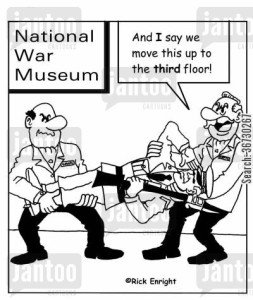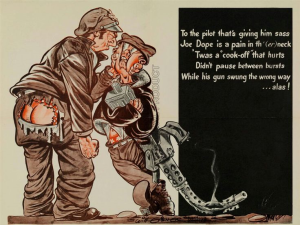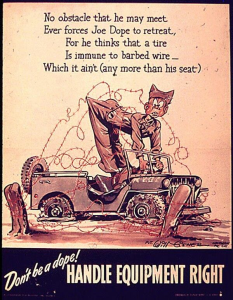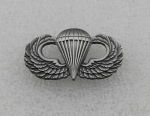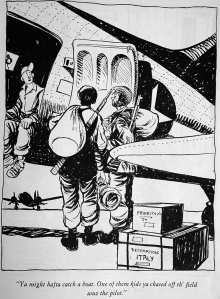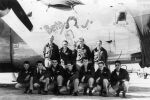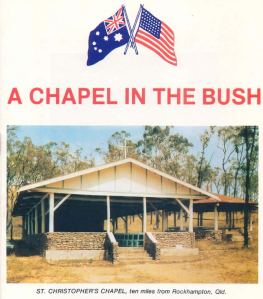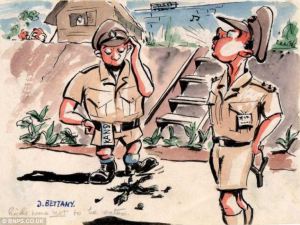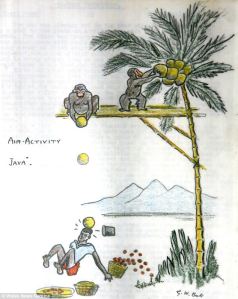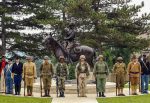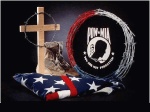I was originally planning to include this bibliography of sorts at the end of this blog, but I did ask what books, Gabrielle, over at gehistorian had, so that site now wants to see mine. My library is always growing, so I’m certain there will be more added to this along the way.

First shelf
WWII: A Tribute in Art and Literature – Time/Life
Return to the Philippines – Time/Life Books
The Pacific War Remembered – John Mason Jr.
Veterans of the VFW Pictorial History – Volumes 2 & 4
Movie Lot to Beachhead – Look
US Army Paratroopers 1943-45 – Gordon Rottman
Five Came Back – Mark Harris
Surviving the Sword – Brian MacArthur
Going Home to Glory – David Eisenhower
Combat Pacific – Don Cogdon
The Last Great Victory – Stanley Weintraub
The Rising Sun – John Toland
Rakassans – Gen. E.M. Flanagan
The Pacific War – Saburo Ienaga
The Great Betrayal – David Day
Yankee Samurai – Joseph Harrington
Quartered Safe Out There – George Fraser
The Pacific War Companion – Daniel Marston
The Pacific – Hugh Ambrose
With the Old Breed – E.B. Sledge
Ghost Soldiers – Hampton Sides
For Crew and Country – John Wukovits
Southern Philippines – US Government Press
Luzon – US Gov’t Press

Second Shelf
The Angels: History of the 11th Airborne Division – General E.M. Flanagan
Their Finest Hour – Winston Churchill
Churchill By Himself – Richard Landsworth
The War Lovers – Evan Thomas
The Somme – Martin Gilbert
A Sea of Words – Henry Holt
The Greatest Generation – Tom Brokaw
The Greatest Generation Speaks – Tom Brokaw
A Company of Heroes – Marcus Brotherton
More Lives Than One – Charles Hood
Recondo – Larry Chambers
American Guerrilla in the Philippines – Ira Wolfert
Band of Brothers – Stephen Ambrose
Three Came Come – Agnes Keith
***OYS OF POINTE HOC – Douglas Brinkel
Utmost Savagery – Col. Joseph Alexander USMC
Drop Zone – Michael Salazar
Section 60 – Arlington National Cemetery – Robert Poole
Vanished – Wil S. Hylton
Rifleman Dodd – C.S. FOrester
The Battle of Britain – Richard Overy
Killing Rommel – Steven Pressfield
The Imperial Cruise – James Bradley
A Treasury of Military Humor – James Myers
True Stories of D-Day – Henry Brook
WWII Heroes – Allan Zullo
Occupation – John Toland
The Los Baños Raid – Gen. E.M. Flanagan
Airborne – Edwin Hoyt
Submarines of the World

Third Shelf
The Great World Atlas
The Smithsonian Collection of Newspaper Comics
Top Gun – Andy Lightbody & Joe Poyer
Semper Fi (History of the US Marines) – Col. H.Avery Chenoweth, USMC
(Envelope) 2 Volumes of Veritas – US Army Historian, Eugene Piasecki
The Swing Era 1940-44 – Time/Life Books
The World’sGreat Military Helicopters – Gallery Brooks
Webster’s Dictionary

Fourth Shelf
Okinawa – Jim Boan
Goodbye Darkness – William Manchester
FUBAR – Gordon Rottman
Melville Goodwin USA – John Marquand
Overdue and Presumed Lost – Martin Sheridan
Reader’s Digest Illustrated Story of WWII
Hey Mac, Where Ya Been? – Henry Berry
My Detachment – Tracy Kidder
The Victory Era in Color – Jeff Ethell
Island Fighting – WWII – Time/Life Books
Warfare of the 20th Century – Christopher Chant
The Coldest Winter – David Halbertson
Unless Victory Comes – Gene Garrison & Patrick Gilbert
Flyboys – James Bradley
Gun at Last Light – Rick Atkinson

Fifth Shelf
A Covert Affair – Jennet Conant
Warpath Across the Pacific – Lawrence J. Hickle
Soldiers Stories – The Miller Family
General Kenny Reports – Gen. George Kenny
The Last Stand of the Tin Can Soldiers – James Hornfischer
US Army Combat Skills Handbook – Dept. of the US Army
Intrepid Aviators – Gregory Fletcher
Eisenhower – Stephen Ambrose
Through These Portals – Wayne MacGregor Jr.
Flags of Our Fathers – James Bradley
The Pacific War – John Costello
Dwellers in Time and Space – Phillip Oakes
The Airmen and the Headhunters – Judith Heimann
Reaping the Whirlwind – Nigel Cawthorne
Sensö – Frank Gibney, editor
Up Front – Bill Mauldin
Elephant Company – Vicki Constantine Croke
Infamy – John Toland
Mask of Treachery – John Costello
Arrogant Armies – James Perry
The Long Way Home – David Laskin
The Collapse of the Third Republic – William Shirer
Captured By History – John Toland
The Samauri Sourcebook – Stephen Turnbull
75 Years – Time Books

Sixth Shelf (L)
America At War – Maurice Isserman
Defending Baltimore Against Enemy Attack – Charles Osgood
MacArthur’s War – Stanley Weintraub
An Army At Dawn – Rick Atkinson
The Day of Battle – Rick Atkinson
I’m Staying With My Boys – Jim Proser

Sixth Shelf (R)
Island of Hope, Island of Tears – David Brownstone
Apache – Ed Macy
Wartime Writings – Marhurite Duras
You Are Not Forgotten – Brian Bender
The Pacific War Papers – Goldstein & Dillon

On a research table
Real Blood! Real Guts! – James Gleason
The Pacific War, Day By Day – John Davison
The Army – The Army Historical Foundation
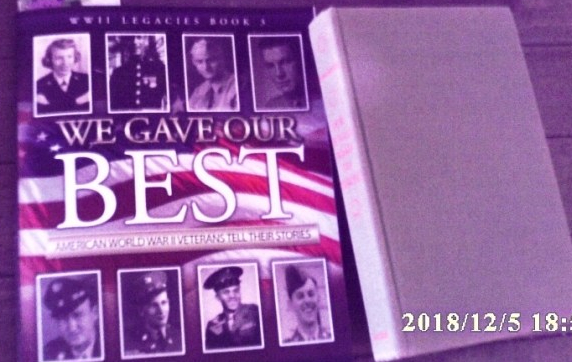
We Gave Our Best – Kayleen Reusser
Our Jungle Road To Tokyo – General Robert Eichelberger
In E-Book form
The Angels: A History of the 11th Airborne Division 1943-1946 – General E.M. Flanagan (Ret.)
Helmet For My Pillow – Robert Leckie
Bahala Na (Come What May) – Rosalinda Morgan
Sink Them All – Charles Lockwood
Carrier Pilot – Norman Hanson
Kiwi Air Power – Matthew Wright
Rescue At Los Baños – Bruce Henderson
Our Jungle Road to Tokyo – Gen. Robert Eichelberger
More To the Story: A Reappraisal of US Intelligence Prior to the Pacific War – LCDR James R. Stobie
Dreadnoughts Unleashed – Matthew Wright
Blue Water Kiwis – Matthew Wright
Rescue At Los Banos – Bruce Henderson
Intrepidity, Iron Will and Intellect – Gen. Robert Eichelberger
More To The Story: A Reappraisal of US Intelligence Prior to the Pacific War – LCDR James R. Stobie
Condition Red: Destroyer Action in the South Pacific – Frederick J. Bell
The Things Our Fathers Saw – Matthew A. Rozell
Check Six: A Thunderbolt Pilot’s War Across the Pacific – Jim Curran
At Close Quarters – Robert J. Bulkey

And one can not forget, Smitty’s Scrapbook, compiled by his mother, Anna Smith.

Ed Ramsey’s War – Stephen J. Rivele
In For A Penny In For A Pound – Howard Hewer
Too Young To Die – Bryan Cox
C-47/R4D Skytrain Units of the Pacific & CBI – David Isby
US Navy PBY Catalina Units of the Atlantic War – Ragnar J. Ragnarsson
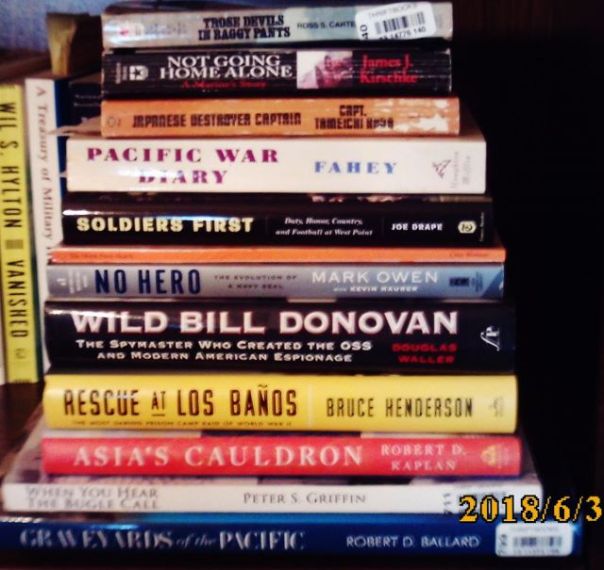
Those Devils In Baggy Pants –
Not Going Home Alone – James J. Kirsckle
Japanese Destroyer Captain – Capt. Tameichi Hara
Pacific War Diary – James J. Fahey
Soldiers First – Joe Drape
The Home Front Hearth – Museum of the American Military Family
No Hero – Mark Owen
Wild Bill Donovan – Douglas Waller
Rescue At Los Baños – Bruce Henderson
Asia’s Cauldron – Robert D. Kaplan
When You Hear The Bugle Call – Peter S. Griffin
Graveyards of the Pacific – Robert D. Ballard

Surviving the Death Railway – Hilary Custance Green Polio To Paratrooper – Anne Archer Hogshead Tullidge Here Is Your War – Ernie Pyle Brave Men – Ernie Pyle

Lost In Shangri-La – Mitchell Zuckoff
Escape From The Deep – Alex Krenshaw
Duty – Bob Greene
Overlord – Max Hastings
Armageddon – Max Hastings
Retribution – Max Hastings

My Father’s Son – Farley Mowat
Women Aviators – Karen Bush Gibson
War In The Pacific – Jerome T. Hagen, BGeneral, USMC, (Ret.)
Pack Up Your Troubles – James Taylor
Letters To The Lost – Iona Grey
Whom Shall I Fear? – Anne Clare
Across The Dark Islands – Floyd W. Radike, BGeneral, US Army (Ret.)

War In The Pacific, Vol. III – Jerome T. Hagen
War In The Pacific, America At War – Jerome T. Hagen
Humor Through Hell – Robert Ehrhart

Clear The Decks – RAdm. Daniel V. Gallery
The Brink – RAdm. Daniel V. Gallery
U-505 – RAdm. Daniel V. Gallery

Voice of the Angels newspaper since 2012
War in the Pacific, Vol. II – Jerome T. Hagen
Leora’s Letters – Joy Neal Kidney
C/O Postmaster – Cpl. Thomas R. St.George

Winged Victory – Geoffrey Perret
War Poems – Brian Busby
Humor in Uniform – Reader’s Digest
Pacific War Stories: In the words of those who survived – Rex Alan Smith & Gerald A. Meehl

Warriors – Max Hastings
Death and Honor – W.E.B. Griffth
In My Hands – Irene Gut Opdyke

We Band of Angels – Elizabeth M. Norman
Deliverance at Los Baños – Anthony Arthur
Death March: The Survivors of Bataan – Donald Knox

Invisible Heroes of World War II – Jerry Borrowman
Lucky 666: The Impossible Mission – Bob Drury & Tom Clavin
Fire In The Sky – Eric M. Bergerud
War Without Mercy – John W. Dower
Hell In The Pacific – Jonathan Lewis & Ben Steele
Ken’s Men: Against the Empire, Volume I – Lawrence J. Hickey
WWII – James Jones
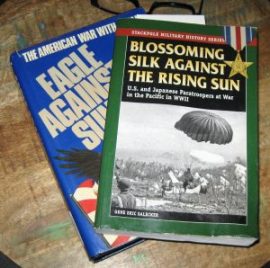
Eagle Against the Sun, by: Ronald H. Spector Blossoming Silk Against the Rising Sun, by: Gene Eric Salecker


The Ship That Wouldn’t Die – Don Keith
The Battle For Hell’s Island – Stephen L. Moore
Soldiers’ Stories: A Collection of WWII Memoirs – The Miller Family

IN THE MOUTH OF THE LION – J. Guenther
WHERE SHALL I FLEE – Anne Clare
Military Wives Cookbook – Carolyn Quick Tillery
DEAR MISS EM – Gen. Robert Eichelberger
NIGHT OVER WATER – Ken Follet (not pictured)

11th Airborne – 11th Airborne Division Association
Soldiers Stories – compiled by: Reader’s Digest

G.I. The American Soldier in World War II – Lee Kennett
The Day The World Went Nuclear – Bill O’Reilly
the Trail of ’42: A Pictorial History of the Alaskan Highway – Stan Cohen
This post was last updated on 19 September 2023
Click on images to enlarge.
##############################################################################
Military Historian Humor –


The NEW Ones.

The OLD Ones….
############################################################
Farewell Salutes –
Kathryn Bailey – Hope Mills, NC; US Army, Hawaii, 25th Infantry Division, 1st Lt., KIA
Stephen Cantrell – Wichita Falls, TX; US Army, Hawaii, 25th Infantry Division, Chief Warrant Officer, KIA
Reynold Darnell – NE; US Navy, WWII, USS Sante Fe
Charles Fritz – Indianapolis, IN; US Army Air Corps, WWII, PTO
Richard Giannotti – New Haven, CT; US Army, FBI
Alfred Harmon – W.Palm Beach, FL; US Army, Korea
William Lane Jr. – Sioux City, IA; US Army, WWII, engineer
Michael Nelson – Antioch, TN; US Army, Hawaii, 25th Infantry Division, Sgt., KIA
M.David Rosenberg – NY; US Army, WWII & Korea, Chemical Corps
Ben Villarreal Jr. – Cotulla, TX; US Army, Vietnam, Ranger, Sgt. Major (Ret. 35 years)
**********
From the USS John McCain
Jacob Drake – No.Lewisburg, OH; US Navy, Electronics Technician 2nd Class, MIA
Dustin Doyon – Suffield, CT; US Navy, Petty Officer 3rd Class, MIA
John “CJ” Hoagland – TX, US Navy, MIA
Logan Palmer – Decatur,IL; US Navy, 3rd Class Petty Officer. MIA
Kenneth Smith – Novi, MI; US Navy, 3rd Class Petty Officer, radarman, MIA
##############################################################################




